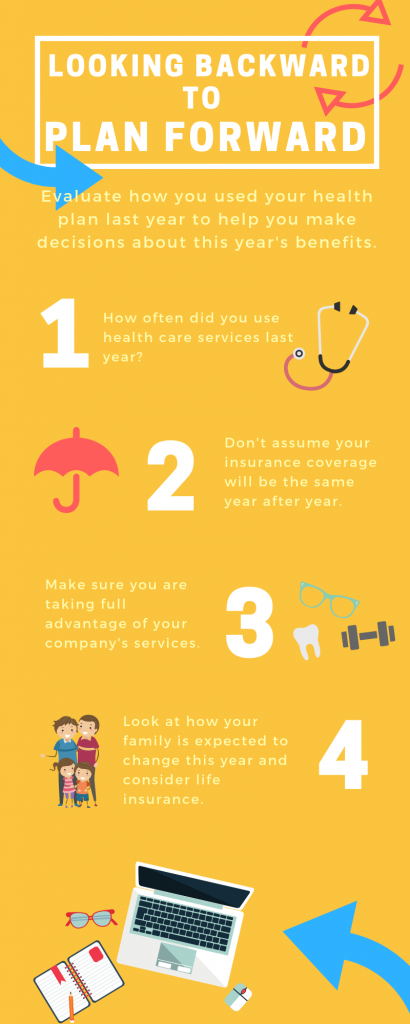
by admin | Jan 24, 2019 | Hot Topics
 The U.S. Equal Employment Opportunity Commission (EEOC) announced that it is closed because of the federal government shutdown. During this period of federal closure, a limited number of EEOC services are available. Staff will not be available to answer questions from the public or to respond to correspondence from the public. The EEOC will accept charges that must be filed in order to preserve the rights of a claimant during a shutdown; however, these charges will not be investigated. The EEOC will not litigate in the federal courts, no Freedom of Information Act requests will be processed, and the following will be cancelled:
The U.S. Equal Employment Opportunity Commission (EEOC) announced that it is closed because of the federal government shutdown. During this period of federal closure, a limited number of EEOC services are available. Staff will not be available to answer questions from the public or to respond to correspondence from the public. The EEOC will accept charges that must be filed in order to preserve the rights of a claimant during a shutdown; however, these charges will not be investigated. The EEOC will not litigate in the federal courts, no Freedom of Information Act requests will be processed, and the following will be cancelled:
- Mediations.
- Federal sector hearings.
- Decisions on federal employees’ appeals of discrimination complaints.
- Outreach and education events.
Moreover, all EEOC digital portals will be closed and will not be accessible to the public. It is unclear how the shutdown will impact the opening date for the 2018 EEO-1 filing website; however, experts anticipate a delay in its availability and that the expected March 31, 2019, deadline for 2018 EEO-1 filings will be extended. ThinkHR will continue to monitor EEOC announcements that affect employers.
Read the announcement and contingency plan
Originally posted on ThinkHR.com

by admin | Jan 10, 2019 | Hot Topics
Saying “Thank You” doesn’t have to be hard. Read about these 5 easy ways you can show your gratitude to others.

by admin | Nov 14, 2018 | Compliance, Hot Topics
The Department of the Treasury (Treasury), Department of Labor (DOL), and Department of Health and Human Services (HHS) (collectively, the Departments) released their proposed rule regarding health reimbursement arrangements (HRAs) and other account-based group health plans. The DOL also issued a news release and fact sheet on the proposed rule.
The proposed rule’s goal is to expand the flexibility and use of HRAs to provide individuals with additional options to obtain quality, affordable healthcare. According to the Departments, these changes will facilitate a more efficient healthcare system by increasing employees’ consumer choice and promoting healthcare market competition by adding employer options.
To do so, the proposed rules would expand the use of HRAs by:
- Removing the current prohibition against integrating an HRA with individual health insurance coverage (individual coverage)
- Expanding the definition of limited excepted benefits to recognize certain HRAs as limited excepted benefits if certain conditions are met (excepted benefit HRA)
- Providing premium tax credit (PTC) eligibility rules for people who are offered an HRA integrated with individual coverage
- Assuring HRA and Qualified Small Employer Health Reimbursement Arrangement (QSEHRA) plan sponsors that reimbursement of individual coverage by the HRA or QSEHRA does not become part of an ERISA plan when certain conditions are met
- Changing individual market special enrollment periods for individuals who gain access to HRAs integrated with individual coverage or who are provided QSEHRAs
Public comments are due by December 28, 2018. If the proposed rule is finalized, it will be effective for plan years beginning on or after January 1, 2020.
by Karen Hsu
Originally posted on ubabenefits.com

by admin | Oct 17, 2018 | Benefit Management, Hot Topics
As you look through enrollment options for 2019, remember to look back on 2018. Check out your spending on procedures and prescriptions, and which providers are in your network.


by admin | Aug 7, 2018 | Group Benefit Plans, Hot Topics
 Q.For a high deductible health plan (HDHP) to qualify for health savings account (HSA) eligibility, what is the minimum amount that an embedded individual deductible can be?
Q.For a high deductible health plan (HDHP) to qualify for health savings account (HSA) eligibility, what is the minimum amount that an embedded individual deductible can be?
A.For 2018, the embedded individual deductible must be at least $2,700. For an HDHP to qualify for HSA eligibility, an individual with family coverage would need to satisfy the required minimum annual deductible for family HDHP coverage (which is at least $2,700 for 2018) before any amounts are paid from the HDHP.

by admin | Aug 3, 2018 | Hot Topics
 We are halfway through our summer break and by now you have heard 1,000 times, “I’m bored!” from your kids! How do you survive the summer and keep your sanity? Follow these tips to make this summer break memorable and tackle the challenge of keeping your kids engaged.
We are halfway through our summer break and by now you have heard 1,000 times, “I’m bored!” from your kids! How do you survive the summer and keep your sanity? Follow these tips to make this summer break memorable and tackle the challenge of keeping your kids engaged.
- Keep A Routine
Kids thrive with schedules. The idea of just lazing around all summer sounds great at the beginning, but it feeds the “I’m bored” monster. Having no routine or daily schedule leaves kids with no expectations of what needs to be accomplished for the day. I cannot count the number of times I’ve texted my children from work at 1pm, “Have you gotten dressed and brushed your teeth?” Set up a daily routine and post it in a well-traveled location in your home. Set up expectations for the day—make your bed, get dressed, feed the dogs, brush your teeth, put away laundry. Simple tasks give familiarity to the day and help guide them to productivity.
- Water & Sun Safety
Teach your kids to always ask before heading out to the pool—whether it’s in your backyard, a friend’s house, or the neighborhood splash park. When they are in the water, make sure someone is watching. Among preventable injuries, drowning is the leading cause of death for children 1 – 4 years old. Drowning happens quickly and quietly—not like it’s portrayed in movies and on TV with lots of splashing and yelling. Keep kids in your sight at all times. Likewise, pay attention to applying sunscreen consistently. The sun’s UV rays can damage your skin in as little as 15 minutes. Apply sunscreen every hour and if possible, have your children wear UV protected clothing and hats.
- Summer Bucket List
Make your “Top 5 Summer Activities” list as a family and schedule them! Maybe it’s to try the new snow cone shop around the corner or go to a special concert series in the park. Your community is bustling with things to do during the summer. Research what special speakers are coming to your local library, break out your list of favorite movies from when you were a kid and introduce them to your children (Space Camp, Neverending Story, Flight of the Navigator!), make slime! Making a list of these fun activities gives your children something to look forward to and work towards achieving.
- Learn a New Skill
This summer’s skill in my house is learning how to type! I found a website that has free lessons and skills tests and my kiddos are completing modules of learning online during the day. Our hope is by the end of the summer, our teenagers can type using all 10 fingers! Figure out a skill that your children could benefit from learning and find a way to teach them this skill. It doesn’t mean you are now instructing them on how to play a violin, but if they want to learn, can you find a local music store that has some summer lessons? Or what about your friend’s artistic teenager who could teach your child how to draw anime or how to sing?
- READ!
You knew that one was coming. We’ve all heard of the “summer slide” where kids slide backwards in learning during their summer break. Reading not only prevents this slide but can propel your child into success for the coming school year. Get to your local library and talk with your librarians about the latest book series that are on fire for your school-aged children. Read along with your kid so you can discuss the twists and turns in the books. Have your student draw pictures of their favorite scenes in their book. Get your noses in some books! Readers are leaders!!
With these survival tips you will be blazing the trails to a successful summer. Parents—you got this!

 The U.S. Equal Employment Opportunity Commission (EEOC) announced that it is closed because of the federal government shutdown. During this period of federal closure, a limited number of EEOC services are available. Staff will not be available to answer questions from the public or to respond to correspondence from the public. The EEOC will accept charges that must be filed in order to preserve the rights of a claimant during a shutdown; however, these charges will not be investigated. The EEOC will not litigate in the federal courts, no Freedom of Information Act requests will be processed, and the following will be cancelled:
The U.S. Equal Employment Opportunity Commission (EEOC) announced that it is closed because of the federal government shutdown. During this period of federal closure, a limited number of EEOC services are available. Staff will not be available to answer questions from the public or to respond to correspondence from the public. The EEOC will accept charges that must be filed in order to preserve the rights of a claimant during a shutdown; however, these charges will not be investigated. The EEOC will not litigate in the federal courts, no Freedom of Information Act requests will be processed, and the following will be cancelled:



